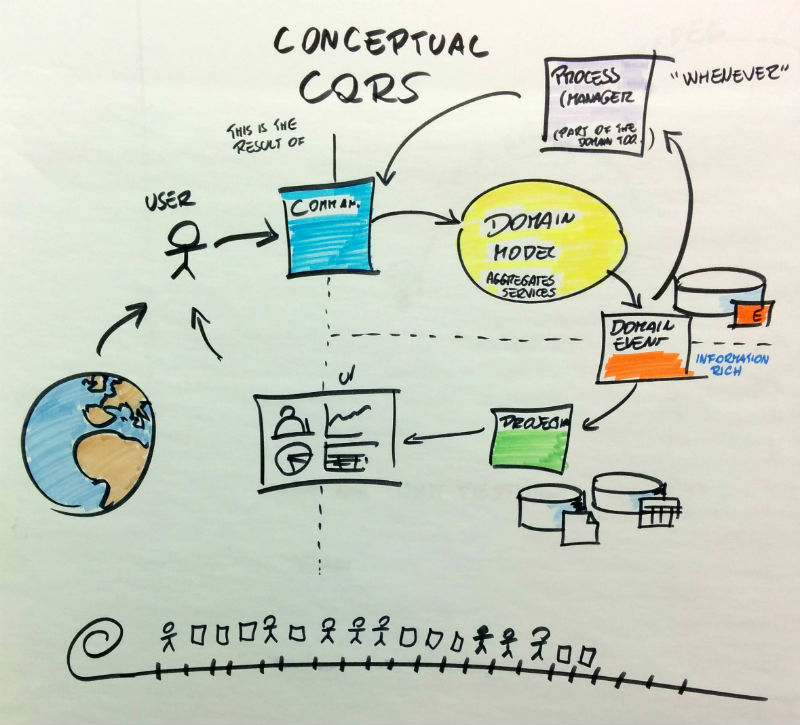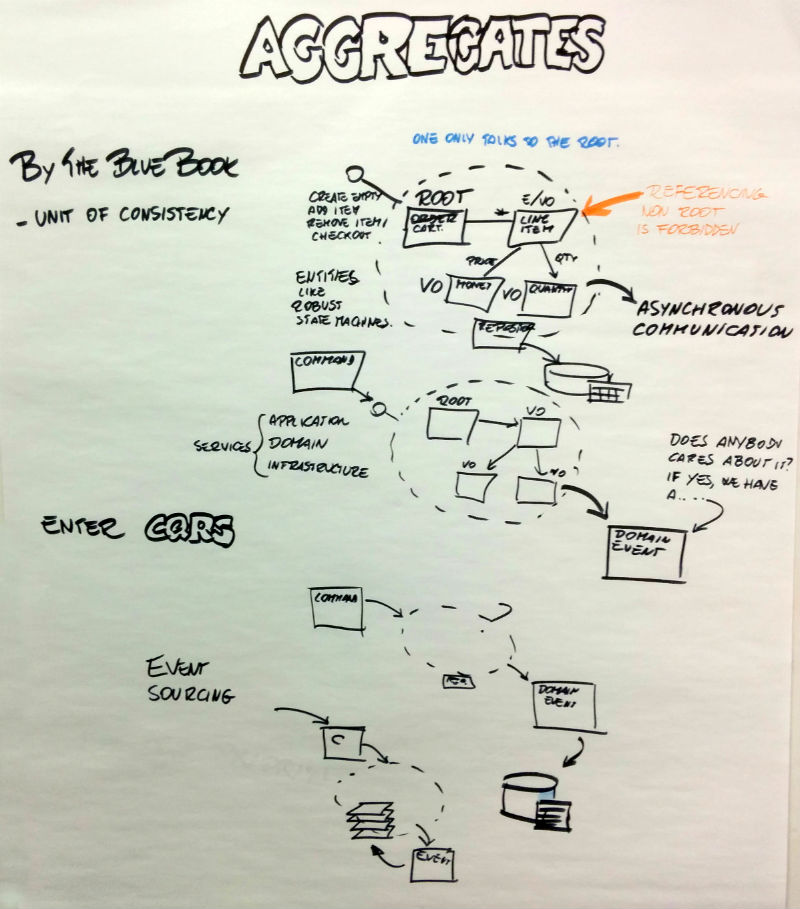Alberto Brandolini on DDD & CQRS
Key take-aways from having Alberto Brandolini on-site for 2 days at Skybet talking to us about Domain Driven Design (DDD) methodologies.
Model from Events & Commands, Not Data
Model your domain from events and commands rather than drafting a data schema. “Event storming” can be a useful technique.

This approach fits well with a CQRS (Command Query Responsibility Segregation) architecture where commands and events are first class citizens, and there are multiple data models (aka projections). The data model is dependent on the downstream use-case; different downstream use-cases demand different data models.
Don’t Replicate CRUD in your Domain Events
Domain events like CustomerAddressChanged is indicative of this problem. Why did the address change? Won’t the downstream applications want to know and act differently depending on this reason? Better is multiple events CustomerAddressCorrected and CustomerMovedHouse. In the former case all customer records might be updated including in-progress & previous orders as the address simply had a mistake in it; in the latter only the current address would be changed and previous historical data left intact.
Don’t use CQRS for a basic CRUD problem.
Bounded Contexts: Same Term, Different Meaning
Ubiquitous Language terms can have different meanings in different Bounded Contexts. e.g. in a Delivery context the “Address” is the delivery location, in a Finance context “Address” is the billing address. Bounded Contexts are usually reflected in company structure: different teams in a company tend to develop their own local ubiquitous language.
Async Communication between Aggregate Micro-Service
Aggregates within a Bounded Context are natural candidates for micro-service boundaries. Communication between aggregates should be async.
